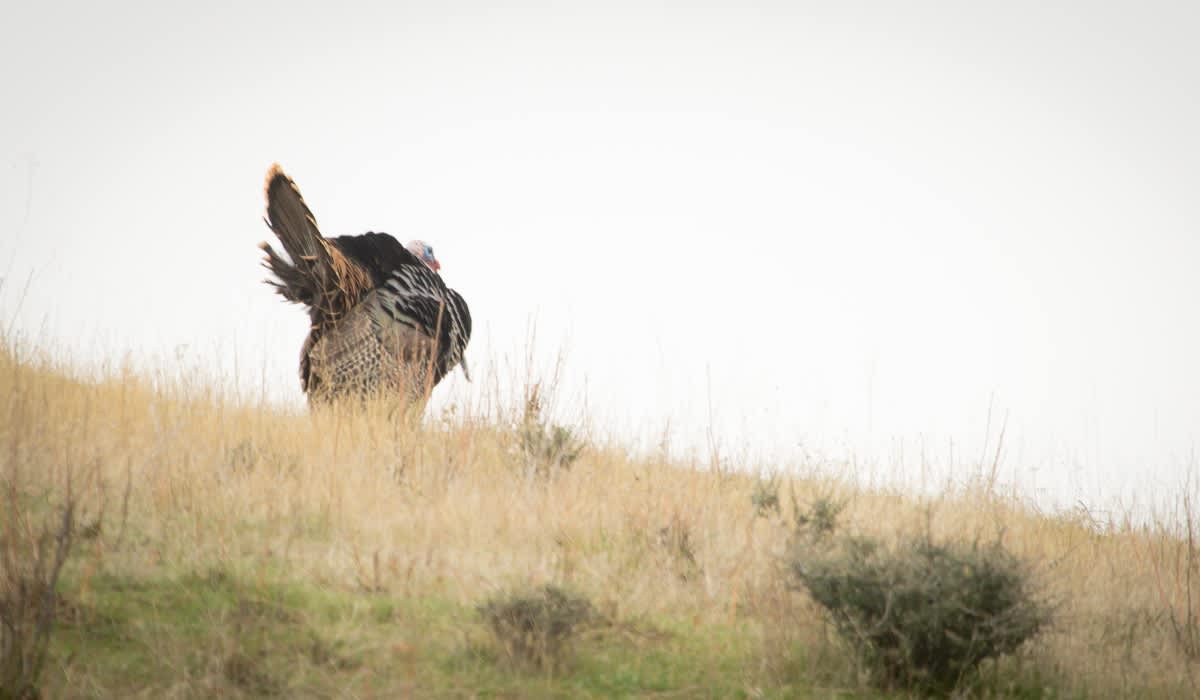5 Turkey Hunting Scenarios You’re Likely to Experience
OutdoorHub Reporters 04.03.19

There’s no single tactic or strategy that works 100% of the time when calling wild turkeys. However, here are several turkey hunting scenarios that may help get a gobbler close enough to make the shot and take him home for dinner.
The best way to approach the use of turkey calls is to understand that a turkey hunt is much like a game of chess. Although there are certain moves players learn to play the game, the real masters of the sport often break said rules to produce results.
Here are several ‘standard plays’ in general calling situations:
Scenario One: You arrive to the woods a little before daylight and hear a turkey gobble. You slip into an area where you can see 30-40 yards in all directions and face the direction from which you expect the turkey to come. You give a soft tree call and the turkey gobbles back at you.
A few minutes later, you hear the turkey fly-down from its roost and gobble as he hits the ground. Now you give a few light yelps. The tom thunders back and scoots closer. In a matter of minutes, the turkey appears and walks straight toward you. Your shotgun rests on your knee and is pointed at the turkey. When the bird is at 30 yards, you squeeze the trigger. Bang! The hunt is over. Pretty ideal, huh?
Scenario Two: You hear a tom fly-down from the roost and gobble as he hits the ground. You give a few light yelps. The tom gobbles back but doesn’t move closer. Although you cluck and yelp, the bird keeps his distance – this guy appears more stubborn. You begin cutting to the bird, which triggers something in him and he comes running. Bang! The hunt has ended.
Scenario Three: The gobbler flies-down from the roost, gobbles and moves toward you. Then, he stops just 50-yards away, strutting and drumming but not coming close enough for a shot. You offer some soft clucks. Although the tom moves closer, he stops again, this time at 40 yards. Once more strutting, drumming but refusing to come closer. You give some light purrs that sound like a contented hen. That got his attention! The turkey moves closer and bang! The hunt is over.
Scenario Four: The gobbler flies-down and struts right over in your direction, but hangs-up at 50 yards. Although you try all the tactics in Scenario Three, nothing seems to work. Using the mouth-diaphragm call, you direct your call to a tree roughly 10-yards behind you. This fools the tom, and makes him think the hen is walking-away from him. Not acceptable. He comes charging over and bang! The hunt is over.
Scenario Five: Same situation. You use all the above tactics but nothing works. The gobbler is still hung up at 50 yards and refuses to budge. You let the tom walk away. When the bird is well out of sight, you circle to the right of the bird, take another stand, change calls and try again. This time the gobbler walks right in. Bang! Successful hunt.
The big takeaway from all this, is it’s important not to settle on just one strategy. Turkey hunting can take many forms, and sometimes getting creative is the just ticket. If you tried one tactic the first morning, switch it up next time and do something completely different. Don’t be afraid to ‘run-and-gun.’ Switching hunting spots entirely after a couple stands can really pay huge dividends.
Good luck this season y’all!

